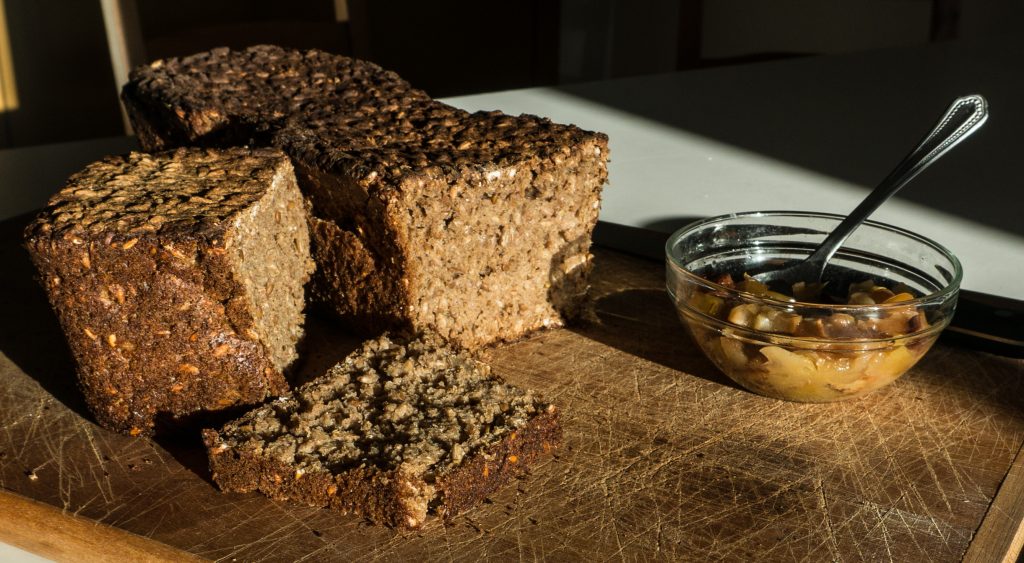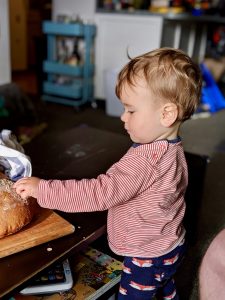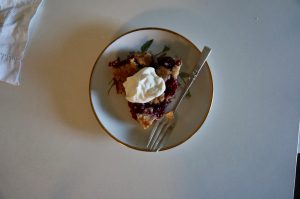Rugbrød is one of the most iconic Danish food items there is. It’s a dense, sourdough bread made with rye flour and often whole rye berries. And unlike its American namesake, this bread has nothing to do with caraway. This bread was one of the things I missed the most, right after moving to the US. A lot of Danes eat this bread every day, sometimes for multiple meals. Eating this kind of food is so ingrained in the culture, that if you use the word mad ‘food’ with a determiner, en mad ‘a food’, it refers to a slice of bread, usually rye bread, with some topping.
Rugbrød has a very distinctive flavor that (I think) goes well with a lot of things you usually eat on bread, like turkey or ham or eggs. You eat it as an open-faced sandwich – slices of bread topped with whatever you like. I think I’ve heard this type of open faced sandwich referred to in the US as ‘smorgasbord’, which I think is a Swedish word. In Danish, we call it en mad (or madder if you have multiple)if it’s just your regular daily variety, and smørrebrød if it has been fancied up with lettuce and additional toppings.
This bread is really easy to make, except for two things. First, you’ll need to reserve quite a long time for making it, and second, the bread requires a sourdough starter. The good news is that you can sleep during most of the time it takes the bread to rise, and that sourdough starters are really easy to make. If you want to try your hand at making a starter, there are lots of recipes out there on the internet – for example here. Some recipes suggest that you keep your starter on the kitchen counter and feed it regularly with flour and water. The problem with this approach for me is that the more you feed your starter, the biggger it gets. That’s great if you bake sourdough bread regularly, but if you don’t, you’ll end up having to throw out some starter mixture every time you feed it. My approach, as you’ll see below, is to keep the starter in the fridge between baking sessions, and to only feed it when I’m making new dough. The starter keeps for about a week or ten days in the fridge. If your inter-baking intervals are longer than that, simply refresh the starter in between with some flour and water.
Here’s the recipe for one large loaf of Danish Rugbrød:
Session 1:
600 grams of flour (half or more should be rye flour)
850 grams of lukewarm water
sourdough starter (I put in whatever amount I have in the fridge)
- Combine flour and water in a big bowl, then add your sourdough starter. The exact quantity of starter doesn’t seem terribly important, but you should aim for about 200-400 grams for this recipe.
- Mix the ingredients together, cover the bowl with a cloth and leave it for about 8 hours, for example overnight.
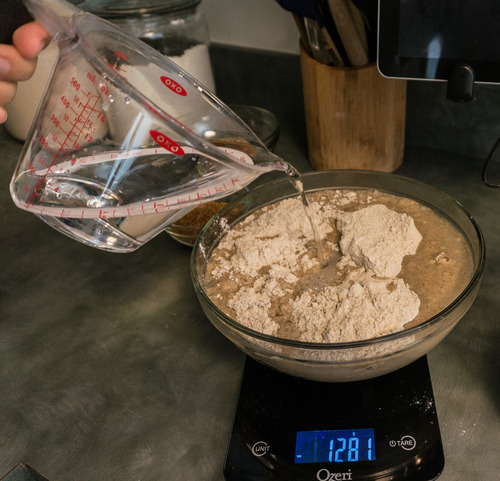
Session 2:
300 grams of seeds or grains (rye/wheat berries, rolled oats, flax seed, sunflower seeds, etc)
~10 grams of salt
1 tbsp of malt syrup (optional)
oil/butter/parchment paper for the baking tin
- Take some dough from the bowl, put it in a small container and store it in the fridge. This is your new sourdough starter!
- Add salt and grains/seed to the remaining sourdough mixture.
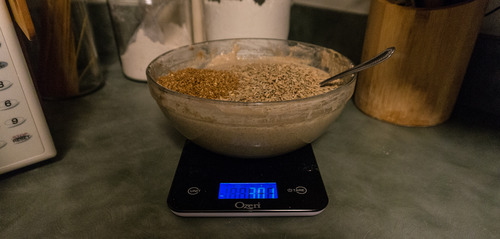 Optionally, you can add a table spoon of malt syrup here, to give more depth to the flavor. Mix well. Don’t worry if the dough seems wetter than a regular bread dough – it is supposed to be, and the seeds and grains will absorb some of the moisture before baking as well.
Optionally, you can add a table spoon of malt syrup here, to give more depth to the flavor. Mix well. Don’t worry if the dough seems wetter than a regular bread dough – it is supposed to be, and the seeds and grains will absorb some of the moisture before baking as well.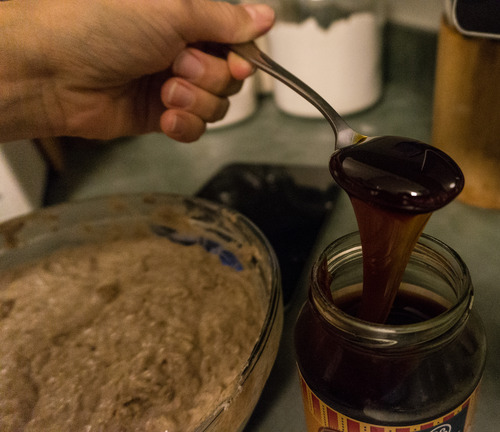
- Lightly coat your baking tin in oil or butter, or cover it with a large sheet of parchment paper
- Pour the dough into the baking tin, cover with cloth and leave it on the counter for about 5 hours
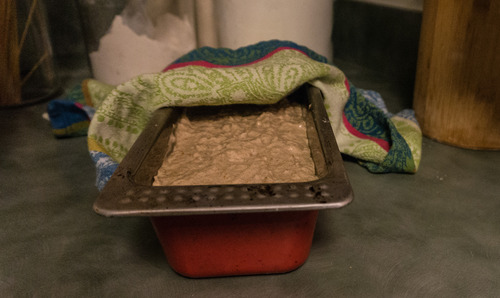
- Preheat the oven to 180º Celsius
- When the oven is ready, poke some holes in the surface of your bread with a fork, to allow the steam to escape, then bake the bread for about 1.5 hours and leave it under a cloth to cool off.
Serve the rugbrød in relatively thinslices topped with ham/egg/tomato/smoked salmon/etc, or go nordic all the way with some traditional Danish accompaniments, such as æbleflæsk (apple pork), shown in the picture on the top of this post (find the recipe for apple pork here).


